
12 Best Lunch Spots In Napa
Best Lunch In Napa – Our 12 Favorite Spots! Lunch is a must when you’re out wine tasting! Whether you’re in the mood for a
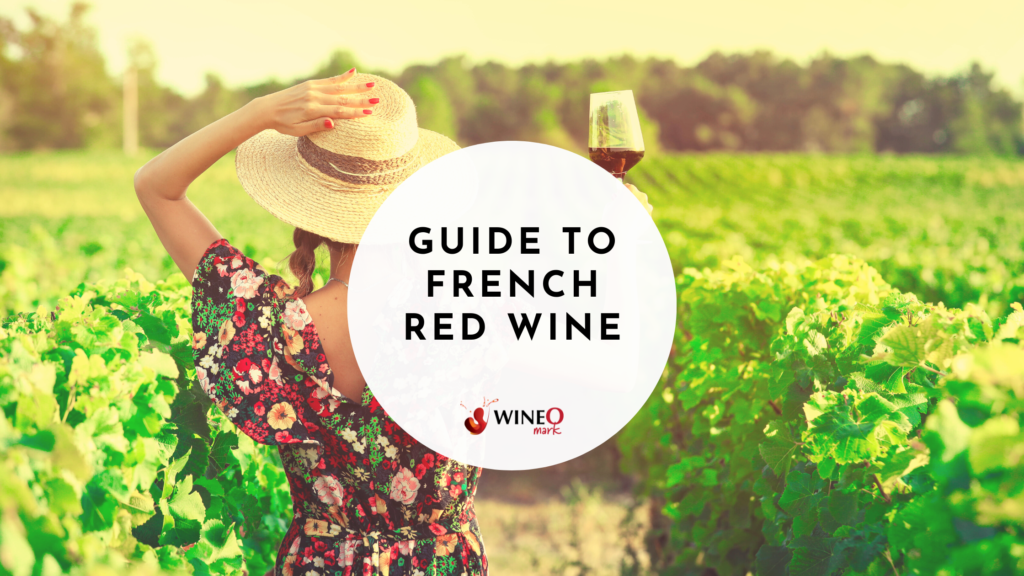
French red wine is renowned the world over for its exquisite taste, elegant aroma, and rich cultural heritage.
And France has a long and storied wine history, dating back to the Roman era. Because the country’s diverse geography, with its varying climates and soil types, has led to the development of numerous regions, each with its own unique character and style.
From the cool, coastal vineyards of Bordeaux to the sun-drenched hills of the Rhone Valley, French wines are a true reflection of the country’s terroir and winemaking traditions.
The French wine classification system, also known as the appellation d’origine contrôlée (AOC), is a legal framework that defines the geographic origin, grape varieties, and winemaking practices for wines produced in France. In addition, the AOC system was established in 1935 to protect the quality and authenticity of French wines and has since become a model for wine regions around the world.
Furthermore, each wine region in France has its own set of AOC regulations that govern the production of wines within that region. And it’s particularly important in the Bordeaux, Burgundy, and Champagne regions of France, where the most famous and expensive wines are produced.
With this intention, the AOC system is hierarchical, with the most prestigious appellations being granted the highest level of classification. So in general, the hierarchy is based on factors such as historical significance, terroir, and winemaking tradition. Here are the levels of classification from highest to lowest:
Fun Fact: Châteauneuf du Pape was the 1st designated AOC
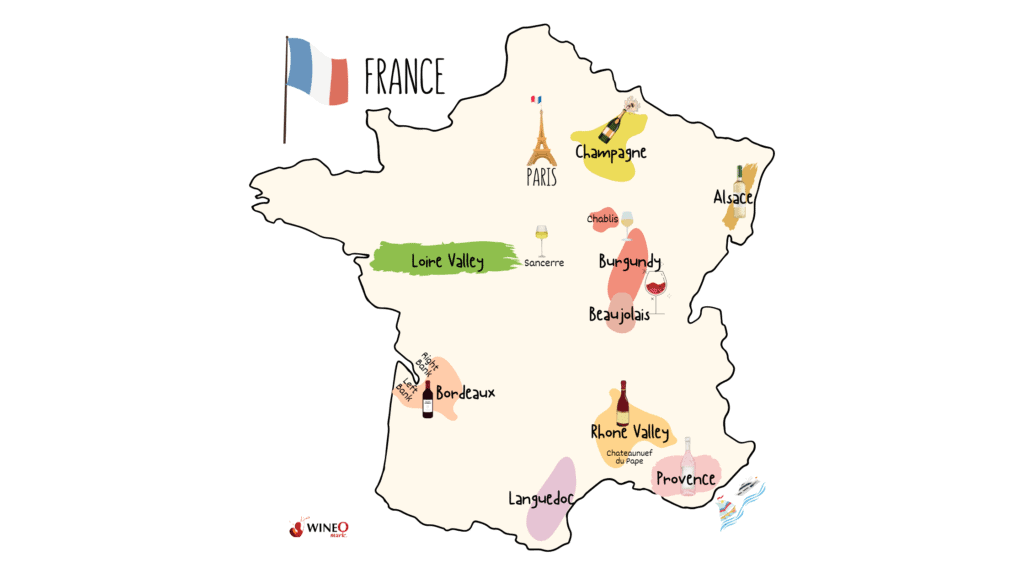
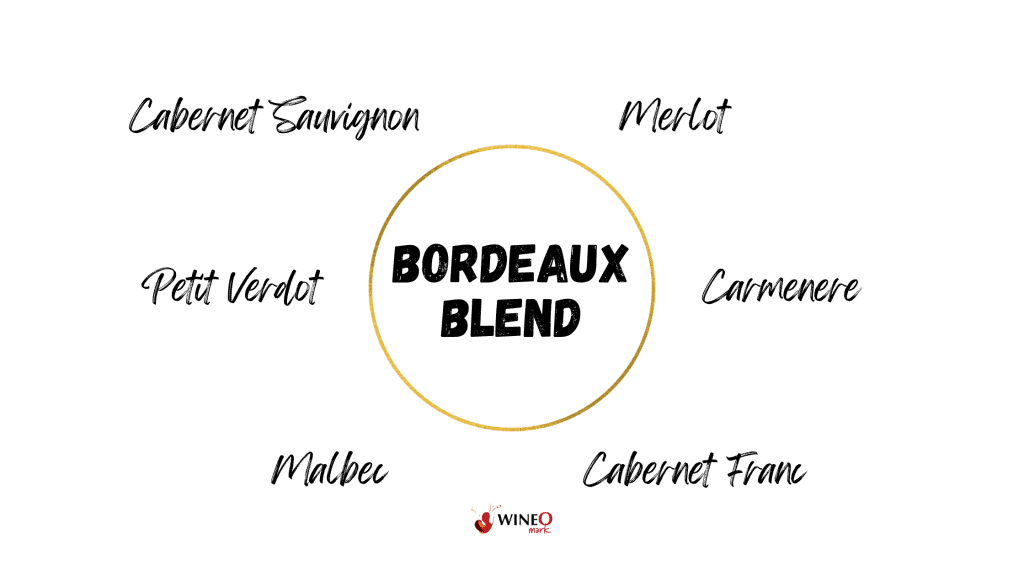
Perhaps the most famous of all French red wines is Bordeaux, a region located in southwestern France. Known for its bold, full-bodied red wines, Bordeaux is home to some of the most celebrated wineries in the world. Plus, they are some of the most highly sought after by collectors and wine enthusiasts due to their depth, complexity, and aging potential.
In fact, Bordeaux red wines are solely permitted to include these six (6) varieties:
WineO Tip: Therefore, if a wine is labeled “Bordeaux blend,” it indicates that the winemaker has used all or a variation of these six grapes in its production.
Bordeaux region is divided into several sub-regions, each with its own distinct terroir and winemaking traditions. And the Gironde river separates the two main regions: Left Bank and Right Bank.
On the Left Bank, which includes the Medoc and Graves regions, Cabernet Sauvignon is the dominant grape variety. And the wines produced in this region are bold with tannic structure and flavors of blackcurrant, blackberry, and oak. Plus, these wines have aging potential. With some of the most prestigious wines capable of aging for several decades.
On the Right Bank, which includes the Saint-Emilion and Pomerol regions, Merlot is the dominant grape variety. And the wines produced in this region are plush with velvety texture and dark fruit flavors, such as black cherry and plum. Also, the Right Bank wines are generally softer and more approachable than their Left Bank counterparts.
FUN FACT: In 1855, Napoleon III requested a classification system for the wines of Bordeaux to showcase the region’s finest wines at the Exposition Universelle de Paris. So wine brokers in Bordeaux came together to create a ranking of the best wines, which resulted in the Bordeaux Classification System we know today.
The Bordeaux Classification System is divided into five tiers, known as “Growths” (or “Crus” in French). The tiers range from Premier Cru (First Growth) to Cinquième Cru (Fifth Growth).
The Left Bank first growths, or Premiers crus, are the most prestigious. Most notably, these include:
The Right Bank of Bordeaux does not have an official classification system similar to the one established in 1855 for the Left Bank, which primarily ranks wines from the Médoc, Haut-Médoc, and Graves subregions. However, the wines from the Right Bank are highly regarded and have their own distinctions.
Saint-Émilion Classification:
Saint-Émilion has its own classification system, which was established in 1955 and is updated approximately every 10 years. This classification is unique in that it is not static, allowing for changes based on the evolving quality and reputation of the châteaux. The Saint-Émilion classification includes the following tiers:
My personal favorite wine region in the world! FYI – When people refer to a red wine as Burgundy, it indicates that it’s a Pinot Noir.
Another notable and prestigious wine region is Burgundy, located in eastern France. Because it produces some of the world’s most sought-after and expensive red and white wines. Also when it comes to red wines, Burgundy is primarily known for producing complex and elegant Pinot Noir with a delicate and nuanced flavor profile.
In fact, one of the hallmarks of Burgundy’s red wines is their ability to reflect the terroir (the unique combination of soil, climate, and geography) of their specific vineyard. While many of the vineyards in Burgundy are small and family-owned, with a focus on traditional and sustainable farming practices. Therefore, this allows for a high level of control over the Pinot Noir grapes, resulting in wines that are truly unique and expressive of their specific place of origin.
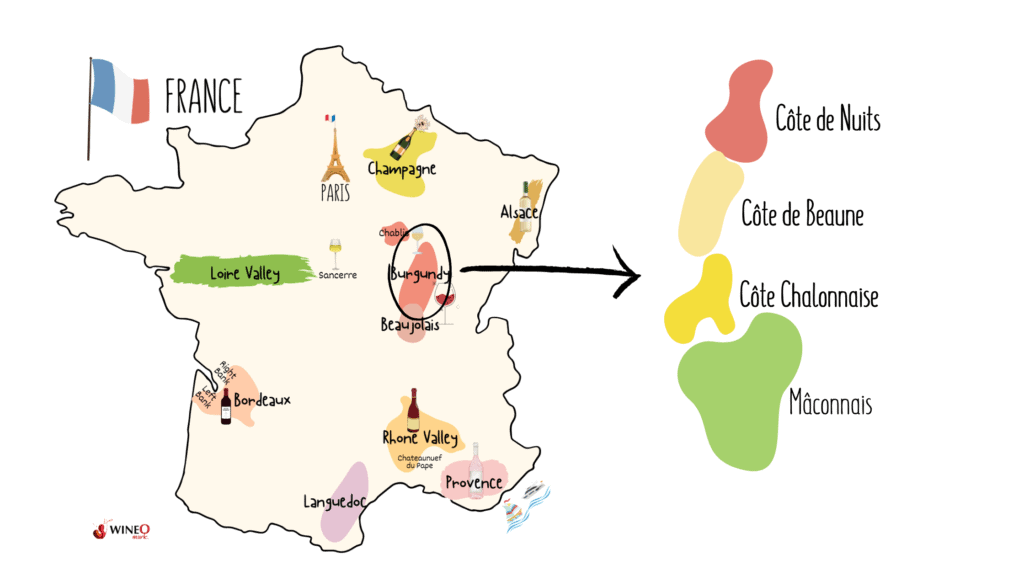
Cote de Nuits is the northern half of Cote d’Or region in Burgundy. And it’s famous for powerful and complex Pinot Noirs, with some of the most famous appellations including Gevrey-Chambertin, Chambolle-Musigny, and Vosne-Romanee.
Undoubtedly, the Pinot Noir wines from this region are some of the best wines in the world! Because they are are full-bodied and rich, with flavors of dark and red berries, earth, and hints of spice.
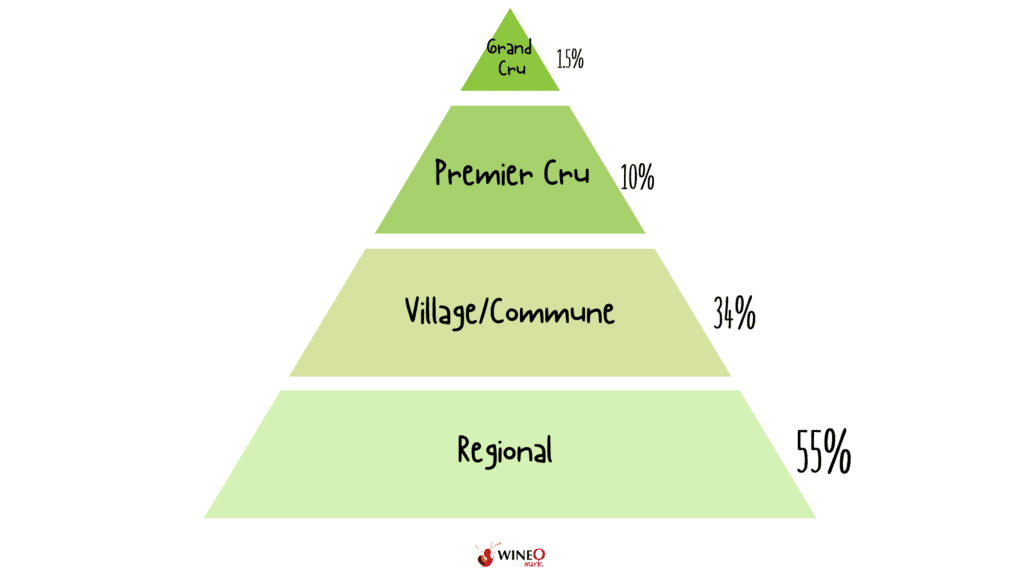
The Burgundy wine classification system is based on a hierarchy of appellations, with the most prestigious and highly-regarded wines coming from the top appellations.
And the highest level of classification in Burgundy is Grand Cru, followed by Premier Cru, Village, and Regional appellations.
A renowned wine region in southeastern France that produces a wide range of high-quality red wines. Additionally, this region is home to a diverse range of grape varieties, including Syrah, Grenache, and Mourvèdre.
Also, the region is divided into two distinct areas: the Northern Rhone and the Southern Rhone. Each with its own distinct terroir and winemaking traditions.
In the Northern Rhone, Syrah is the dominant grape variety. And the most famous appellations in this region include Hermitage, Cote-Rotie, and Cornas. And these wines are full-bodied and intense with complex flavors of black fruit, pepper, and spice.
Plus, the wines from the Northern Rhone are characterized by their elegance, purity, and ability to age gracefully.
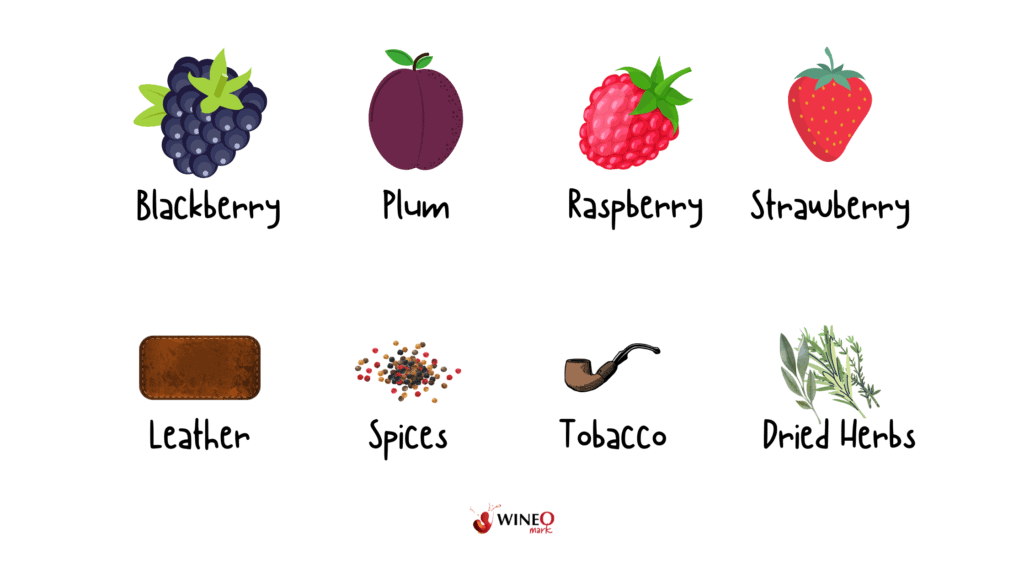
In the Southern Rhone, the wines are typically produced from a blend of grape varieties, with Grenache, Syrah, and Mourvèdre (“GSM”) being the most common. Undeniably the most famous appellation in this region is Châteauneuf-du-Pape. And this region produces full-bodied and powerful French red wines with flavors of dark fruit, earth, dried herbs, and spices.
Whereas, other notable appellations in the Southern Rhone like Gigondas, Vacqueyras, and Cotes-du-Rhone, produce wines that are more approachable and fruit-forward than those from the Northern Rhone.
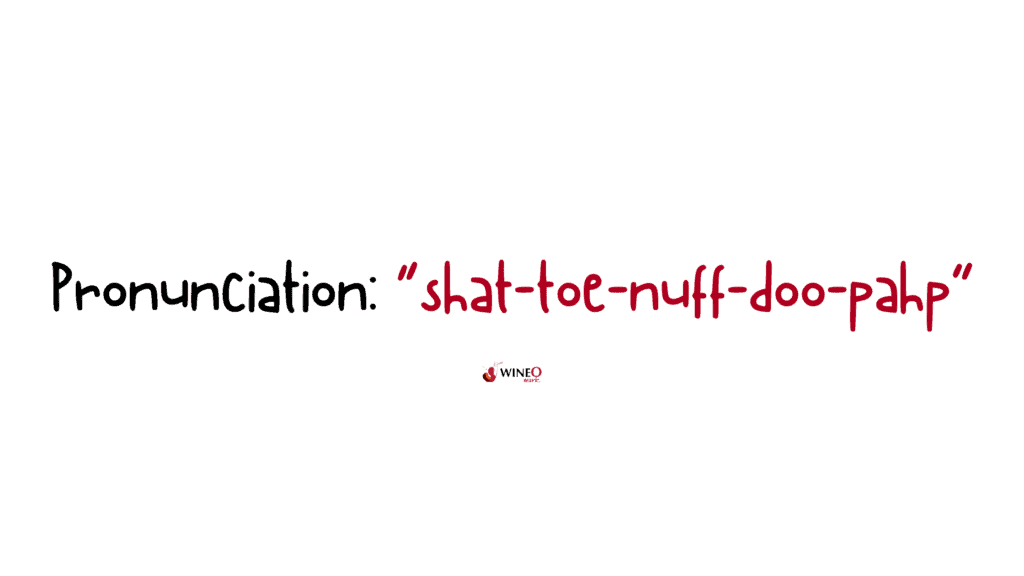
Languedoc is a vast wine region in southern France that has a long history of winemaking, dating back to ancient times.
And the most common grape varieties used in the production of French red wines in the Languedoc include Syrah, Grenache, Mourvèdre, and Carignan, among others. In fact, these grapes are often blended together to create complex and flavorful wines that reflect the region’s unique terroir. Also, they are used to make Rosé wines.
Lastly, one of the hallmarks of French red wines from Languedoc is their affordability, with many high-quality wines available at a reasonable price point. For this reason, this has led to a growing interest in the region’s wines among both casual drinkers and wine enthusiasts.
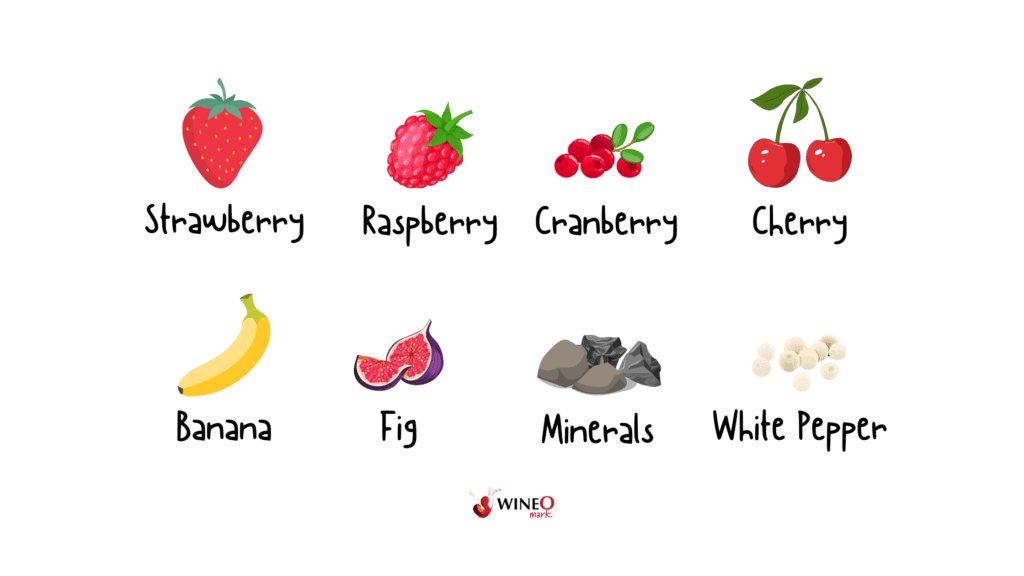
Beaujolais wine region is located in eastern France, just south of Burgundy, and the Gamay grape is the dominant variety in the region.
As a result, they produce wines that are light and fruity, with flavors of red fruit, such as cherry and raspberry, as well as floral and spice notes. Furthermore, the wines are typically low in tannins and have a refreshing acidity that makes them a great pairing for a wide variety of foods.
Beaujolais Nouveau
The most famous appellation is Beaujolais Nouveau, which is released each year on the third Thursday of November and is celebrated with great fanfare around the world. And this wine is made using a winemaking technique called carbonic maceration, which involves fermenting whole clusters of grapes in a carbon dioxide-rich environment, resulting in a wine that is light, fruity, and low in tannins.
Beaujolais Villages
In addition to Beaujolais Nouveau, there are several other appellations in Beaujolais that produce high-quality French red wines. And these include Beaujolais Villages, which are made from grapes grown in the hillside vineyards around the region.
Beaujolais Crus
The 10 Crus include Brouilly, Cote de Brouilly, Regnie, Morgon, Chiroubles, Fleurie, Moulin-a-Vent, Chenas, Juliénas, and Saint-Amour. And these wines are made using traditional winemaking techniques and are known for their depth, complexity, and ability to age.
In addition to its exquisite taste, French red wine also plays an important role in the country’s culture and heritage. As a result, wine has been an integral part of French life for centuries, and the country’s winemaking traditions have been passed down from generation to generation.
And French wine is a true reflection of the country’s history, culture, and way of life, and is celebrated around the world as a symbol of sophistication, elegance, and refinement.
So whether you’re a red wine lover that prefers bold, full-bodied Bordeaux or delicate, fragrant Burgundy, French red wines offers a flavor profile that is second to none.

Best Lunch In Napa – Our 12 Favorite Spots! Lunch is a must when you’re out wine tasting! Whether you’re in the mood for a

North Coast Wine Co. Outerbound Pinot Noir – WineO Mark Review Wine Stats Grape Variety: 100% Pinot Noir Vintage: 2019 ABV: 14% Wine Region: North Coast,

Böen Pinot Noir – WineO Mark Review Wine Stats Grape Variety: 100% Pinot Noir Vintage: 2021 ABV: 14.6% Wine Region: California Flavor Profile: Cherry, raspberry, blackberry,

Merry Edwards Sauvignon Blanc – WineO Mark Review Wine Stats Grape Variety: 100% Sauvignon Blanc Vintage: 2022 ABV: 14% Wine Region: Russian River Valley, California
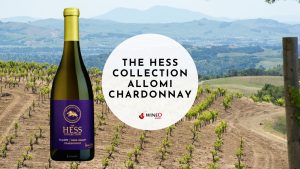
The Hess Collection Allomi Chardonnay – WineO Mark Review Wine Stats Grape Variety: 100% Chardonnay Vintage: 2019 ABV: 14.3% Wine Region: Napa Valley, California Flavor Profile:

Stags’ Leap Chardonnay – WineO Mark Review Wine Stats Grape Variety: 100% Chardonnay Vintage: 2022 ABV: 14.1% Wine Region: Napa Valley, California Flavor Profile: Oak, vanilla,

Godeval Cepas Vellas Godello – WineO Mark Review Wine Stats Grape Variety: 100% Godello Vintage: 2021 ABV: 13% Wine Region: Valdeorras, Spain Flavor Profile: Peach,

Félix Solís Mucho Más Tinto N.V. – WineO Mark Review Wine Stats Grape Variety: Tempranillo, Syrah Vintage: Non-Vintage ABV: 14% Wine Region: Spain Flavor Profile: Vanilla,
